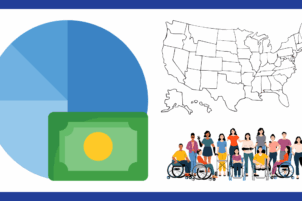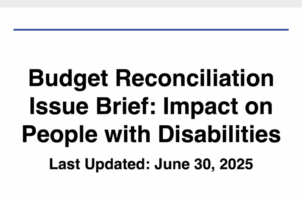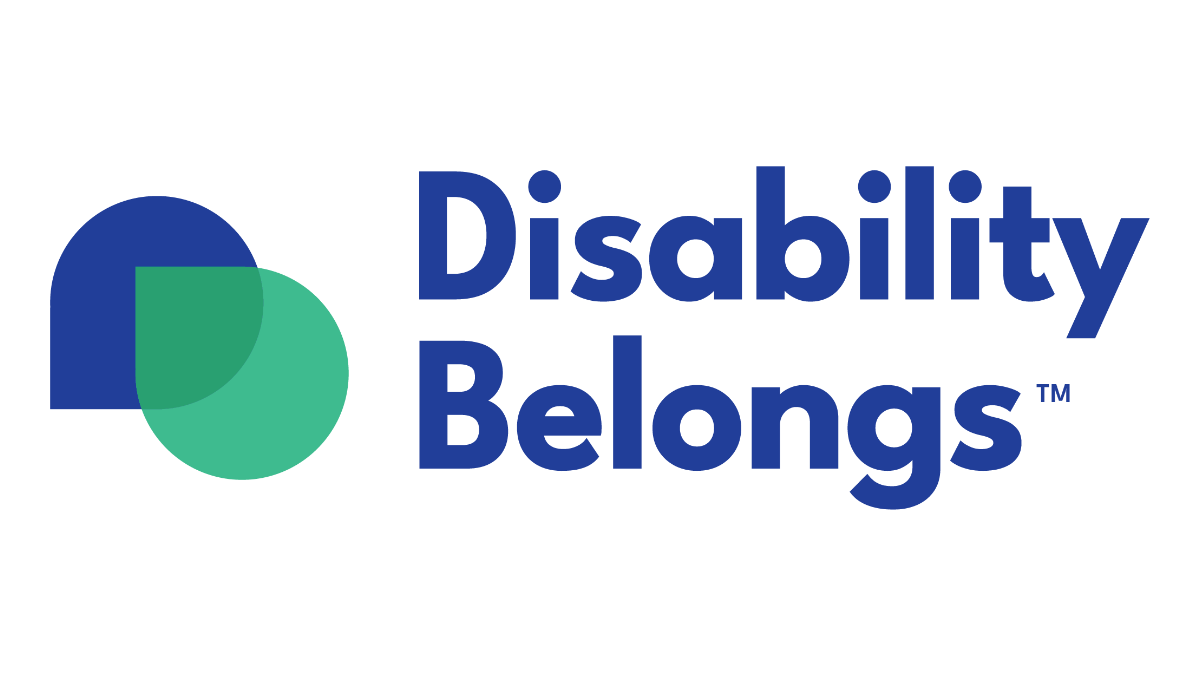In today’s fast-moving world, it’s easy to forget where we came from—and even easier to take for granted the rights and protections on which we now rely. It is critical to remember that progress is not permanent—it must be actively protected and advanced.
The rights of disabled people have been hard-won. Recent developments, including a proposal to cut Medicaid funding, remind us that equity achieved is not equity secured.
This makes two things clear. First, we must understand history. Second, we must honor lived experiences. History helps us track how far we’ve come—and how easily we could slip back. Lived experience provides the moral clarity and urgency that data alone cannot.

George H.W. Bush signs the ADA into law.
The Americans with Disabilities Act (ADA), signed into law on July 26, 1990, wasn’t a gift. It resulted from years of tireless activism, organizing, and protests. Events like the 1990 Capitol Crawl, where activists pulled themselves up the steps of Congress, forced the nation to confront the literal barriers disabled people faced every day—barriers to buildings, transportation, and equal rights in education. The ADA helped break down those barriers—legally, physically, and symbolically; it made public spaces and transportation accessible, protected people with disabilities from discrimination, and affirmed our place in public life.
Today, the ADA serves as both a safeguard and a symbol of progress and justice. Revisiting its history reminds us why we must protect it. Just as past activism led to significant legal protections, today’s challenges require similar vigilance and collective action.
From Marginalization to Empowerment
Before the Rehabilitation Act of 1973, there were no legal protections against disability discrimination. As a result, disabled people could be excluded from basic aspects of life without consequence. A restaurant could deny service, a store could block entry, or an employer could refuse to hire, solely based on disability. Essential accommodations—such as ramps, braille menus, or sign language interpreters—were rare. Public spaces were designed without accessibility in mind, and transportation systems left people behind—literally.
The Rehabilitation Act was a landmark moment. Section 504 of the act prohibited disability discrimination in institutions receiving federal funds but left many parts of life unprotected. That changed in 1990 with the ADA, which extended civil rights protections across American society: employment, education, public accommodations, transit, and more. It marked a cultural shift as much as a legal one. The ADA didn’t just open doors; it mandated that those doors be wide enough for everyone to enter.
Centering Intersectional Lived Experience
Disability does not exist in a vacuum. It intersects with race, gender identity, sexuality, socioeconomic status, and more. These overlapping identities shape how individuals experience discrimination and access. To advance civil rights and inclusion, we must account for this complexity and design solutions that reflect it.
Darren Bates, Director of Policy at Disability Belongs™, grew up before the ADA. As a gay, biracial man with a disability in 1980s Texas, he remembers vividly what exclusion felt like.
“Imagine trying to vote back then. No accessible polling places, no voting machines, no guarantee anyone would help you. If you couldn’t physically get in and vote—too bad.”
He was once turned away without explanation while trying to vote with friends at a police station polling site in Harris County. “We didn’t know if we’d be safe. And we weren’t. We were kicked out.”
For Bates and many others, the fight for access wasn’t just about getting through a door—it was about claiming a right to exist within it.
“Showing up to vote meant something,” Bates said. “It was how we pushed back. It meant being counted when others wanted us to be invisible. We found a way to be seen.”
The ADA Today: Progress at Risk
The same barriers Darren faced decades ago persist today in different forms. Economic insecurity, lack of access to healthcare, and limited employment opportunities continue to affect disabled people at disproportionate rates.
Laws like the ADA are powerful, but only if we uphold them. From the narrowing of legal definitions of disability to threats against Medicaid and Offices for Civil Rights, we are seeing challenges that call us to act.
None of this is theoretical. These decisions shape real lives.
Darren Bates puts it simply: “When you talk about voting rights today, you need to remember where you come from.”
He’s not reminiscing. He’s providing a roadmap. The journey toward disability rights has been long and challenging, and the path forward requires all of us to engage actively. By learning our history, listening to lived experiences, and taking deliberate action, we can preserve and advance the rights so many fought to attain.
Disability Belongs™’ Manager of Policy Nelly Nieblas co-wrote this blog post.







